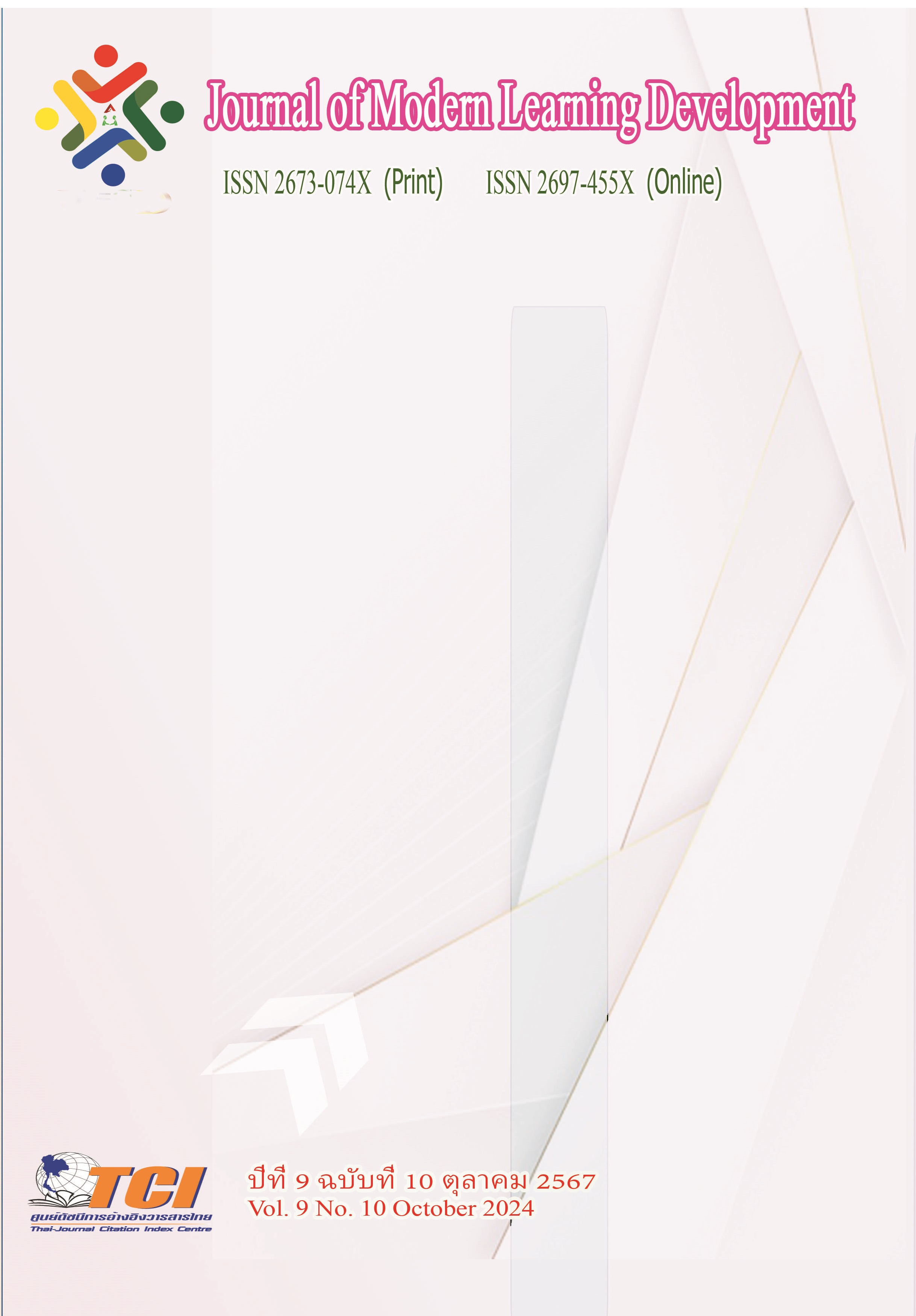A Study on the Style and Performance Form of Tibetan “Guo Xie” Dance in Historical and Contemporary China
Main Article Content
Abstract
Since the directives issued by the General Office of the Central Committee of the Communist Party of China and the General Office of the State Council on January 25, 2017, there has been a concerted effort to preserve and develop regional traditional cultures in China, with a particular focus on the Tibetan "Guo Xie" dance. This initiative aligns with broader goals to enhance the "soft power" of national culture and promote a "diverse and integrated" cultural pattern within the country.
The objectives of this research were: 1) to research the historical background and development of the Tibetan "Guo Xie" dance, and 2) to research the performance styles and modern forms of Tibetan "Guo Xie" dance in contemporary China, including its regional characteristics in different Tibetan areas (northern, southern, eastern). The samples for this study were selected through purposive sampling of regions known for their distinctive expressions of the "Guo Xie" dance. The research instruments for data collection included document analysis of historical records, ethnographic reports, and direct field observations conducted between June 2022 and July 2023. The statistics for data analysis employed qualitative methods to interpret the cultural significance and evolution of the dance forms.
The research results were found as follows: 1) The "Guo Xie" dance has evolved from its agricultural and pastoral origins to embody a broader cultural identity, reflecting the dynamic interplay between tradition and modern influences. 2) The dance exhibits distinct regional variations that highlight the diverse cultural practices within Tibetan communities in northern, southern, and eastern regions. Suggestion: Further research should focus on the impact of national cultural policies on the preservation and innovation within traditional dances, exploring deeper into the socio-political influences that shape these cultural expressions.
Article Details
References
Dong, J. (2008). A brief discussion on the performance form and aesthetic consciousness of Tibetan dance. Knowledge Economy, (09), 172-173. doi:10.15880/j.cnki.zsjj.2008. 09.066.
Jiangdong. (2021). A classified study on the “names” of representative Tibetan traditional dances in Xizang. Journal of Beijing Dance Academy, (03), 81-88.
Jin, F. (2022). Analysis of Tibetan dance performance forms from an aesthetic perspective. Art Appreciation, (17), 115-118.
Sangga, D. (2008). On the similarities and differences between Tibetan “Guo Xie” and “Dui Xie” dance styles. Journal of Beijing Dance Academy, (01), 72-75.
Yin, C. (2013). Review of Tibetan dance culture and art form. Yihai, (12), 162.
Li, Y. Z. (2023). Research on the monitoring system of the education and training market [Doctoral dissertation, Shandong Normal University]. CNKI. https://link.cnki.net/ doi/10.27280/d.cnki.gsdsu.2023.002148
Ma, L. (2016). The basic characteristics and innovative development of Tibetan dance. Yi Hai, (01), 84-85.
Xu, Z. J. (2023). Construction of preschool dance curriculum centered on Chinese ethnic and folk dances [Master's thesis, Nanchang University]. CNKI. https://link.cnki.net/doi/10. 27232/d.cnki.gnchu.2023.004636


